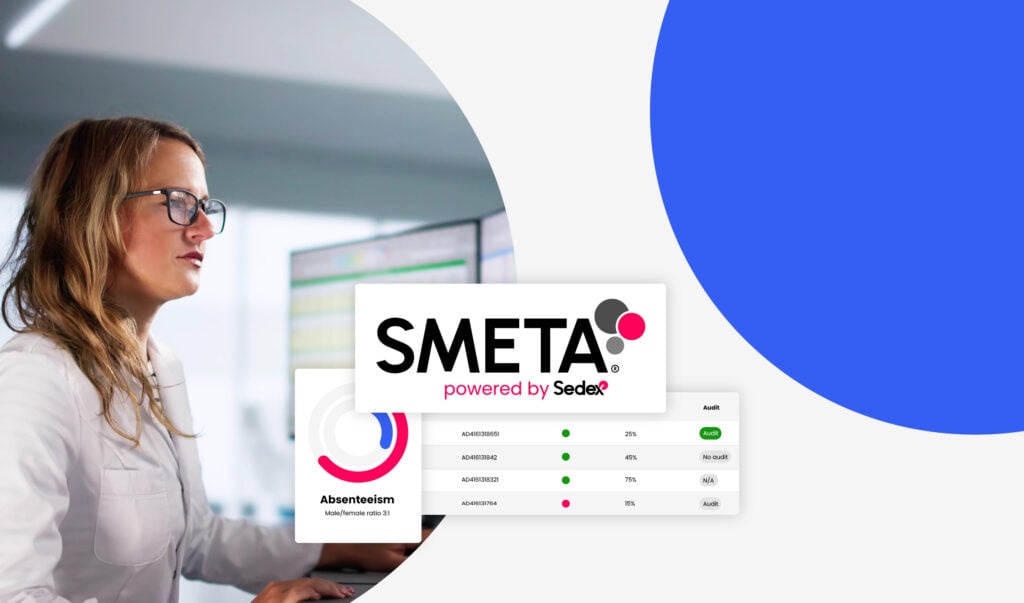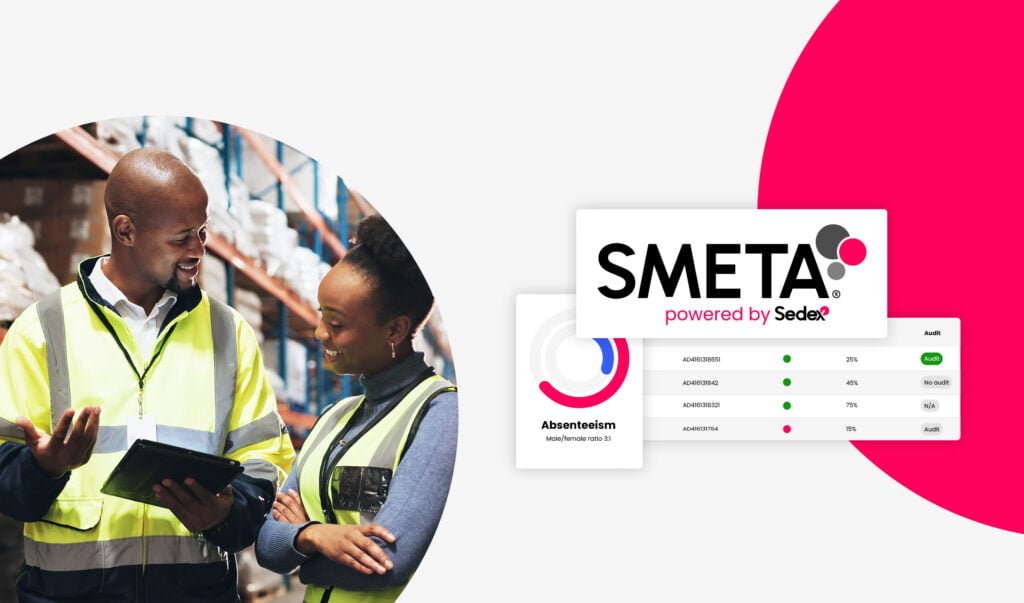Understanding the indicators of forced labour
Forced labour is a form of modern slavery, and one of the worst forms of exploitation in supply chains. Learn about the indicators of forced labour and why organisations use them to identify forced labour risks.
With an estimated 17.3 million people in forced labour employed in the private sector[i], forced labour is a critical concern for many companies. It may be a significant risk in parts of a business’s own operations or their supply chain.
Modern slavery, examples of which include forced labour and child labour, is usually a criminal activity and is notoriously difficult to detect. Long, complex global supply chains make it harder to have visibility of the people, places and operations that make up a business’s supply networks.
What is forced labour? Learn more with our helpful introduction.
Where forced labour occurs, worksites may have sophisticated ways of hiding this exploitation from authorities. This can leave companies unsure about how to identify or address the issue.
When identifying instances of forced labour, it’s important for a company or person to understand what signs to look for. This also helps to build evidence to support any claims about forced labour occurring.
Using “indicators” to understand forced labour risks
To help companies identify risks or actual instances of forced labour, the International Labour Organization (ILO) has identified indicators of forced labour[ii] to help recognise a person who is trapped in forced labour or may require urgent assistance.
The presence of one or several of these indicators can increase the risk of forced labour for workers.
However, just because an indicator is present, or a worker experiences poor conditions, this doesn’t always mean forced labour definitely exists at a site.
These indicators work as “red flags” – alert signs that there is an increased risk that requires further investigation and action.
The indicators of forced labour
Click on each indicator to learn more about it.
Abuse of vulnerability
What is this? When an employer or third party, such as a recruitment agent, takes advantage of people in vulnerable situations. For example, migrant workers who don’t speak the local language or understand local laws.
These characteristics make some people more vulnerable and put some workers at greater risk of forced labour than others.
Example: A company in the Middle East has employment contracts containing an opt-out clause for the national weekly working hours limit.
The contracts are in Arabic only, despite a large proportion of the company’s workers being from countries where Arabic isn’t a common language. These migrant workers may not be aware that they have consented to working hours above the national limit.
Abusive working and living conditions
What is this? Working conditions and accommodation for workers that are degrading, dirty, hazardous or otherwise sub-standard.
Example: A mining company doesn’t provide all of their workers with the necessary safety gear. Workers are expected to provide their own, but this safety gear is expensive and workers struggle to afford certified equipment. This results in many using makeshift safety gear that doesn’t protect them properly.
If this indicator exists alongside a worker’s freedom to leave employment (with reasonable notice) being restricted, that could be a forced labour situation. However, sometimes workers will accept poor living or working conditions out of desperation to secure a job.
Debt bondage
What is this? Workers incur or inherit debts to employers or agents, and are bound to the employer or agent until a debt is considered paid. Employers may even continue adding costs — such as for food or accommodation — to a worker’s debt. This can leave a worker with very reduced “take-home” wages, and/or make it impossible for them to clear their debt.
Example: A migrant worker borrows money from a recruitment agent to secure a job in another country and pay for transport to it. This sum is added against their name as a debt, and the worker can’t leave their job until it is paid.
Deception
What is this? The failure to deliver what was promised to a worker, whether that promise was made verbally or in writing. Any situation that removes a worker’s free, informed consent — if they’d known the truth about a job, they wouldn’t have taken it – is deceptive.
Example: A company promises workers that they’ll be going to a particular worksite and given clean, secure, private accommodation. The employment contracts that workers sign don’t contain the full address of this site or any other site. The workers are taken to a different work site with dirty, unsafe, shared accommodation.
Excessive overtime
What is this? Workers must work for hours and/or days at a time that go beyond the national legal limits or collectively agreed limits. They might be denied breaks, or may have to work beyond these limits to earn the minimum wage.
Example: A work site’s records show that the total hours worked per week regularly exceed 70 hours for most of the workforce, often with no rest day. The national legal limit for weekly working hours is 50.
Excessive overtime is very common in some industries — for example, in apparel manufacturing many top-producing countries indicate as extremely high-risk for this in our risk tool. Excessive overtime on its own isn’t considered forced labour. However, a situation could become forced labour if workers didn’t consent to overtime and were threatened or punished if they asked to work regular hours.
Intimidation and threats
What is this? Workers are threatened with physical, legal, financial or other consequences if they try to leave a job or refuse sub-standard working conditions. This includes threats made to workers looking to join a trade union, or threats to report undocumented workers to the authorities.
Example: A factory experiencing building structure problems threatens workers with wage deductions if they don’t come to work, even though the factory is dangerous.
Isolation
What is this? Workers are in remote locations without the means to leave, or denied contact with the outside world. Isolation can be geographic, linguistic (workers can’t communicate with those around them), social or cultural.
Example: A palm oil plantation in a remote area can only be reached by boat. Workers are allowed a weekly journey across the river, but the boat doesn’t always turn up — or arrives when most workers are out on the plantation.
Physical and sexual violence
What is this? Workers are physically or sexually abused. This includes hitting workers, forcing workers to do jobs outside of their employment contract, touching workers inappropriately without their consent or forcing workers to take drugs or alcohol.
Example: Supervisors at a factory regularly slap workers who aren’t meeting production quotas.
Restriction of movement
What is this? Workers can’t enter and exit a worksite or their accommodation freely, or have their movements unreasonably controlled. This includes locking workers in at worksites or accommodation, demanding deposits when workers want to leave at the end of a shift or employing security guards to stop workers leaving.
The International Labour Organization recognises that reasonable restrictions include those necessary for workers’ safety and security at worksites.
Example: Workers are locked on site during their shifts at a factory, and only three supervisors have keys to the gates. Workers can ask one of these supervisors to open the gates for them, but if the supervisors refuse, workers can’t leave.
Restricted freedom of movement is a strong indicator of forced labour.
Retention of identity documents
What is this? Employers take workers’ identity documents, such as passports or work visas – and hold them somewhere that workers can’t access freely and independently.
Example: Workers’ passports are kept in a locked safe at a worksite. Only two staff members have a key. Workers must ask one of these staff members to open the safe if they wish to access their passports, and these staff members aren’t always available.
Retaining workers’ identity documents doesn’t on its own count as forced labour, in formal definitions of modern slavery. But restricting the owner’s access to them could, because workers may not be able to travel or get another job without their personal documents. Employers often rationalise that they’re holding identity documents for safekeeping – however, workers may not feel comfortable requesting access to them, or the process to access them may be difficult and intimidating.
Withholding of wages
What is this? Wages aren’t paid to workers on time or in full. This includes irregular and delayed wage payments, when workers receive payment in kind (e.g. in accommodation, food or products) that don’t match the amounts deducted for these from their wages, or when workers don’t control their own bank accounts.
Example: An employer makes deductions from workers’ pay for food without their consent or knowledge. These deductions fluctuate without anybody explaining this to workers, and are much higher than the reasonable costs of the food.
Irregular or delayed wage payments don’t constitute forced labour on their own. But when wages are systematically and deliberately withheld, or if workers fear leaving a job in case they never get these wages, this indicates a significant risk of forced labour.
Management systems (the Sedex addition)
Sedex has added a 12th indicator of “Management systems failures” to the ILO’s original list of 11. Management systems are critical to complying with the law, including laws on working hours, modern slavery Acts and regulations on employment terms. A failure in management systems can indicate an increased risk of forced labour.
What is this? A business doesn’t have effective policies and processes in place to identify and prevent forced labour in their operations and recruitment practices. This can include the absence of policies and processes to help a business make sure they comply with national and international labour laws.
Example: A company uses an employment agency to recruit migrant workers. The company accepts the agency’s claims that the agency has seen all the right paperwork for each worker. They don’t conduct their own checks on workers’ ages or work permits.
Example: A company regularly has long shifts and seven-day working weeks. They have no system to check and record whether workers consent to these hours and days.
Sedex teams analysed data from 100,000+ social audits to look at the indicators of forced labour identified and their prevalence in global supply chains – learn more here.
Key recommendations for businesses
- Identify forced labour risks in your operations and supply chain. Conduct a risk assessment of your worksites and suppliers. This will help you understand your own supply chain, and where higher-risk countries, sectors and workers are present in it.
- Assess these risks by looking at the indicators of forced labour across your own worksites and those in your supply chain. Prioritise assessment activity, such as conducting audits or deep-dive investigations, by the level of forced labour risk.
- Take action to protect victims. If you suspect or identify forced labour, protecting and supporting potential victims is the first critical step for addressing this. Alongside this, gather evidence and document findings to support a further investigation.
- Embed good practices and check that both your own worksites and suppliers’ sites have robust labour management systems. These are the policies and processes to help a business ensure good conditions for workers.
- Conduct training to build your knowledge, raise awareness and train teams – including suppliers – about forced labour. Include training about the countries, sectors, commodity type, business model and vulnerable worker types where forced labour is a greater risk.
- Work with suppliers to resolve issues. Each of these indicators pose a concern for workers, even if you don’t suspect or identify forced labour. Engage with suppliers to understand the causes of these situations, and work together to develop mutually beneficial solutions.
Need help? Our Consulting team provides bespoke support tailored to your business needs.
Sources:



